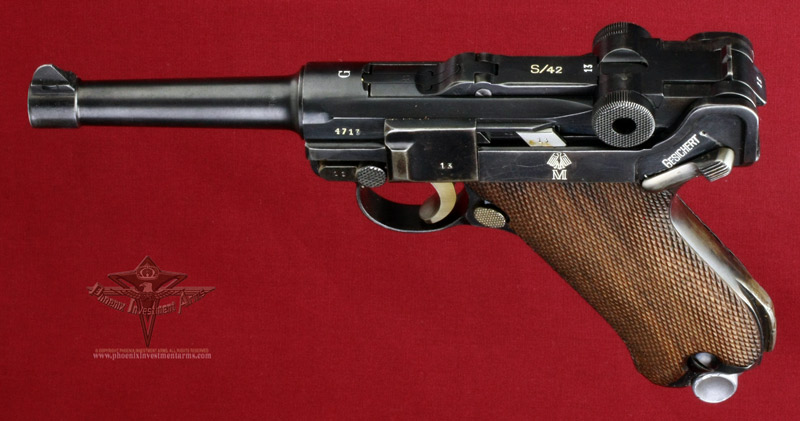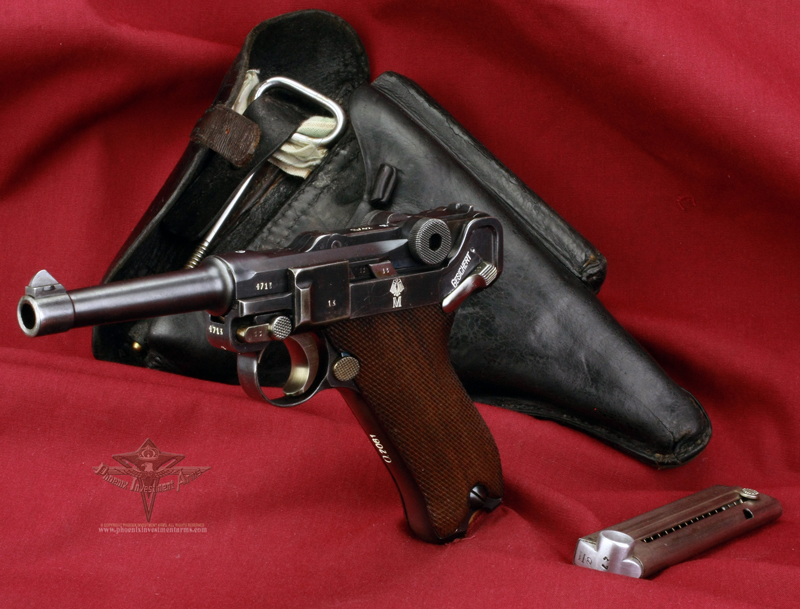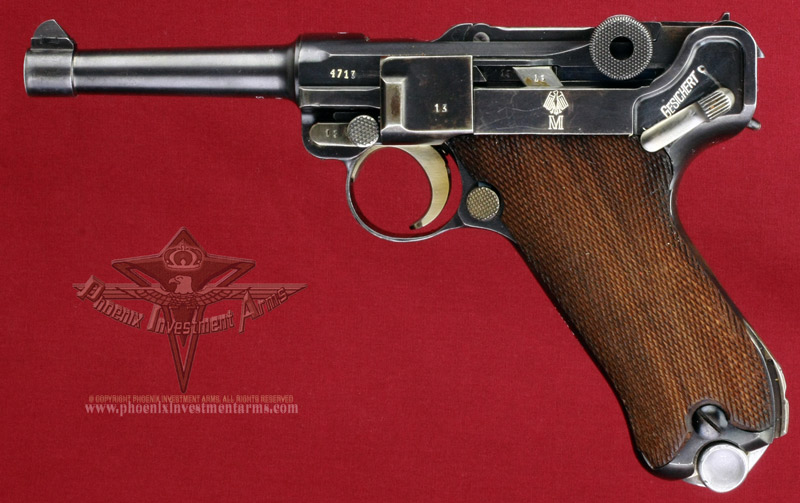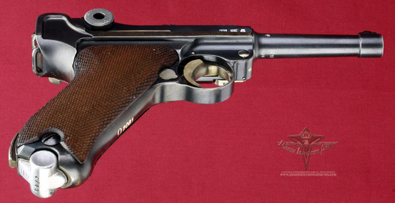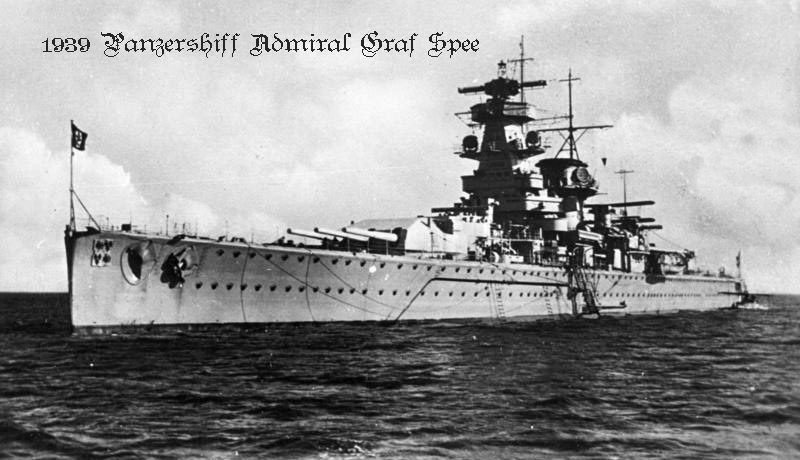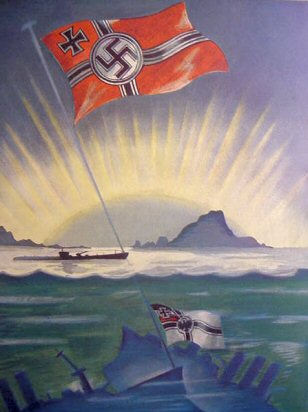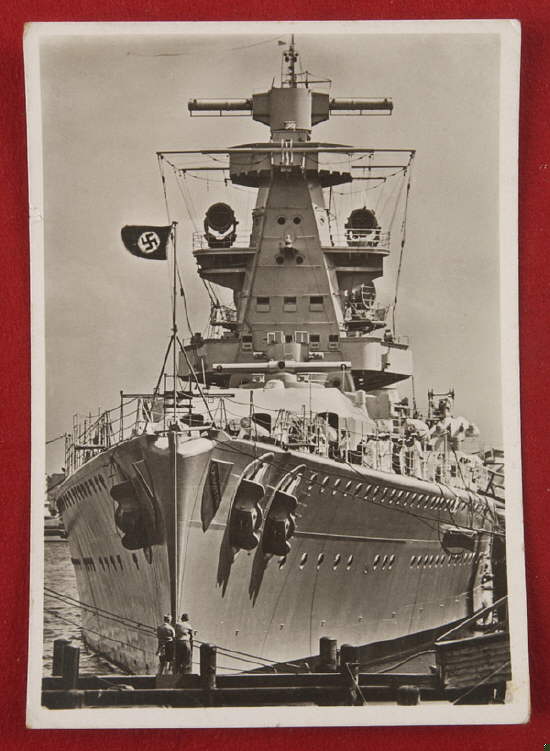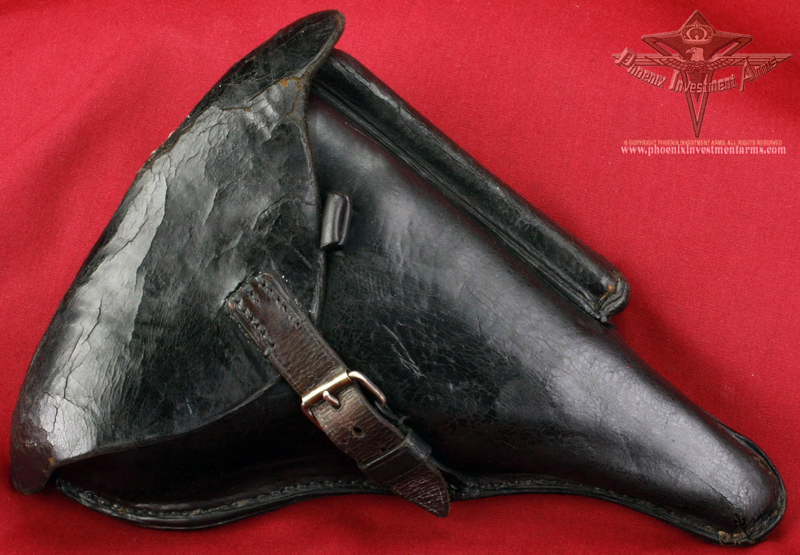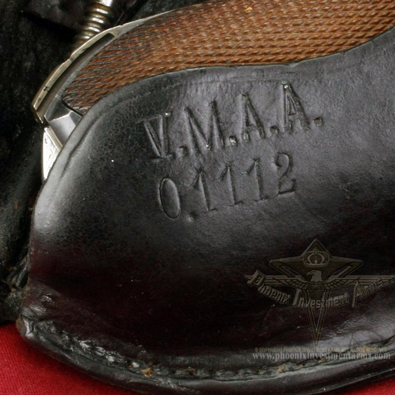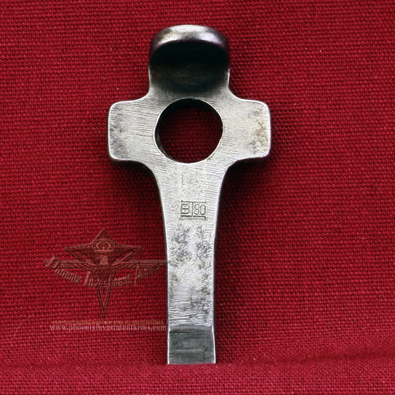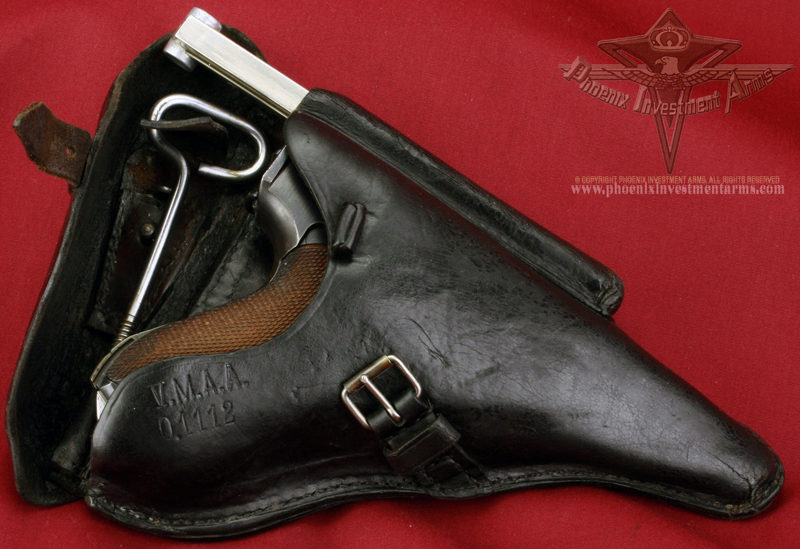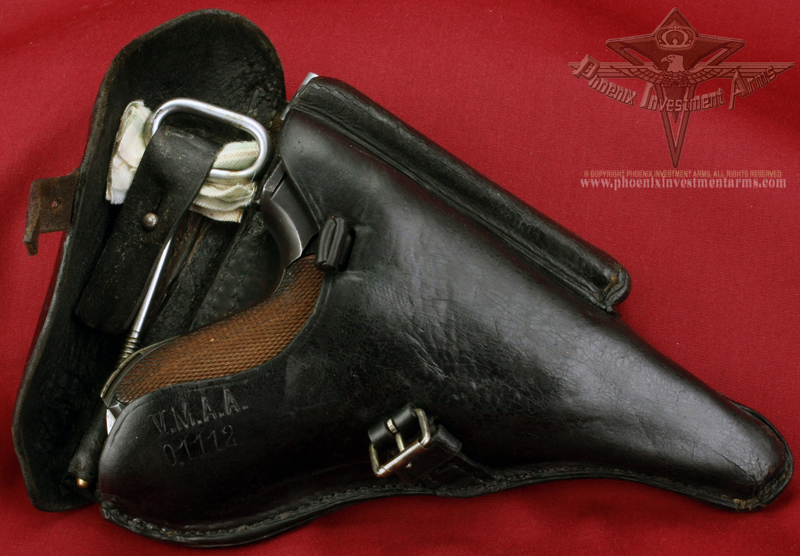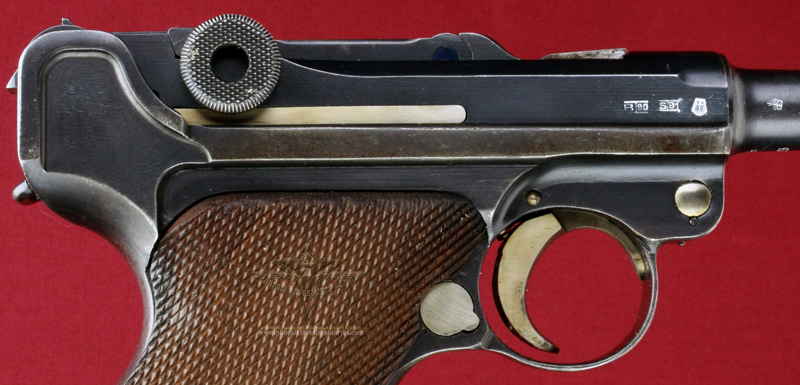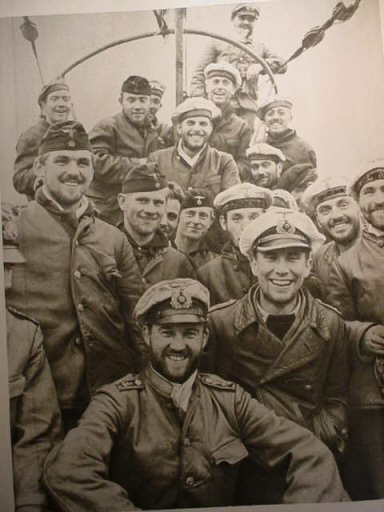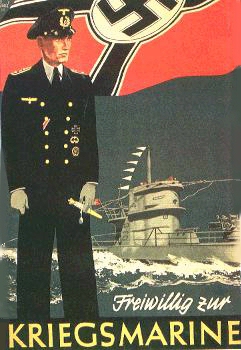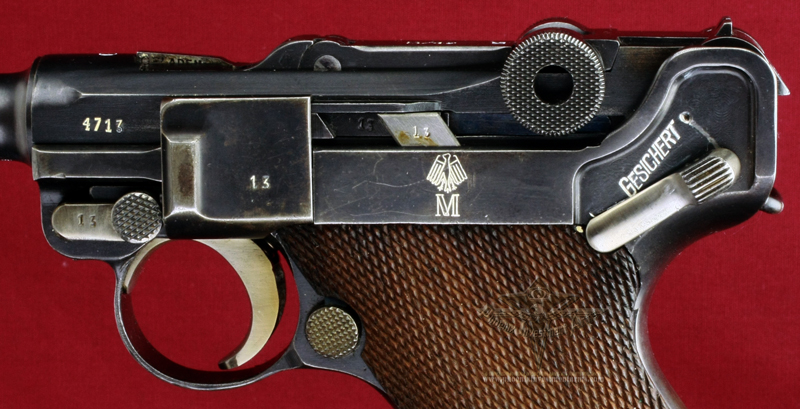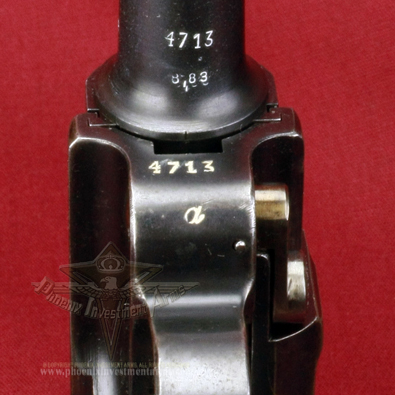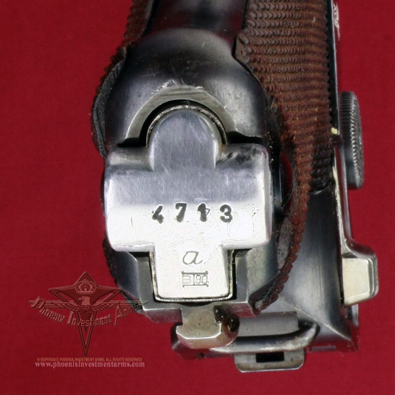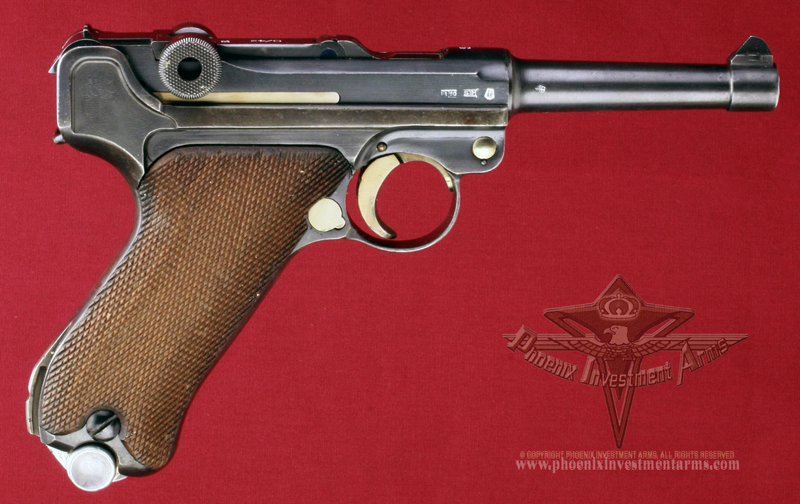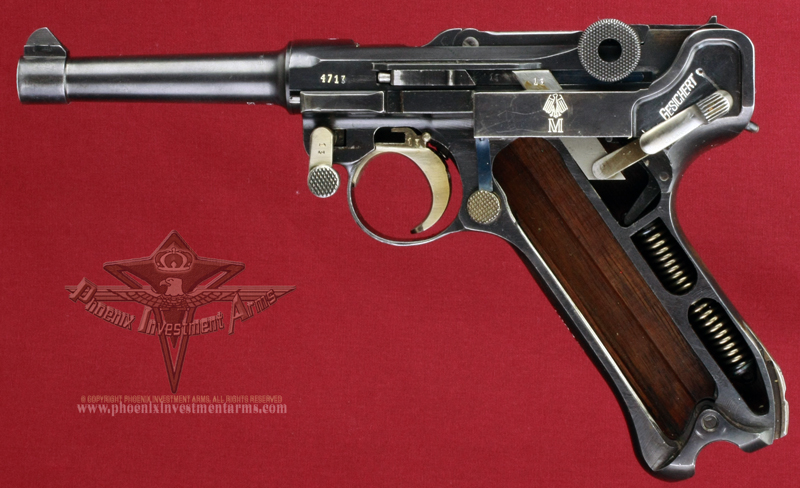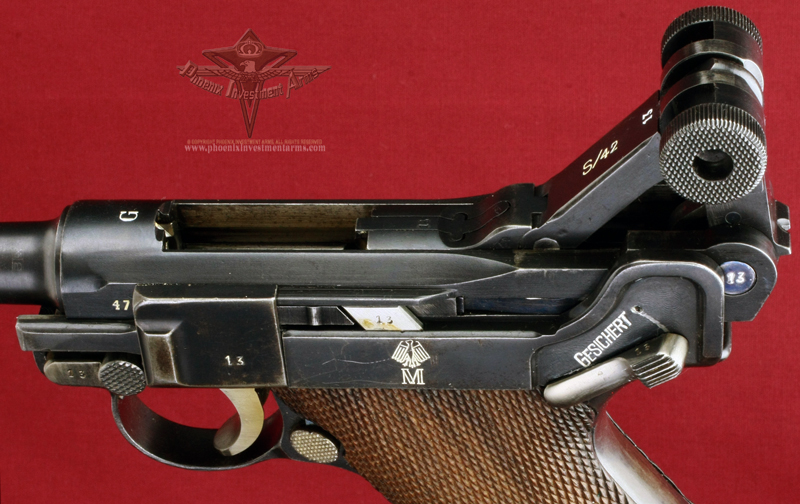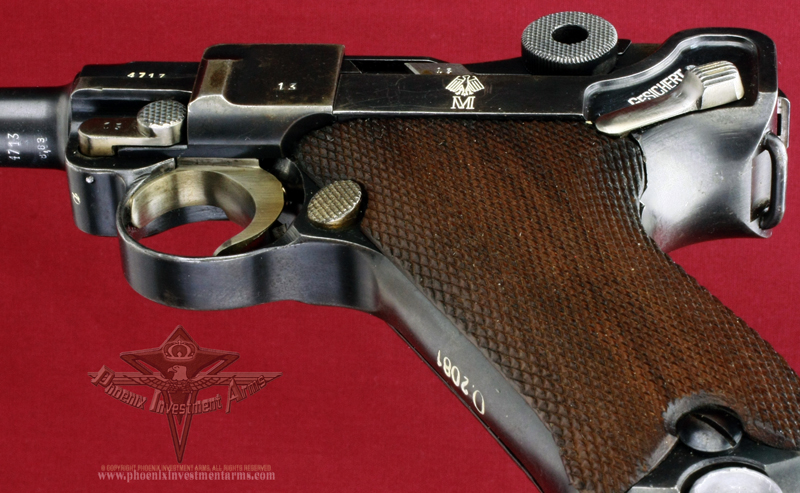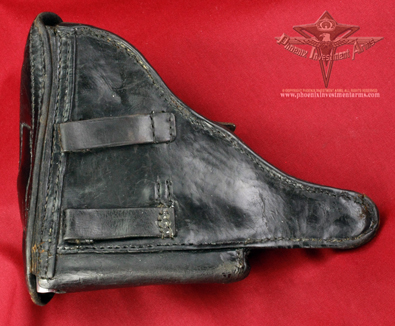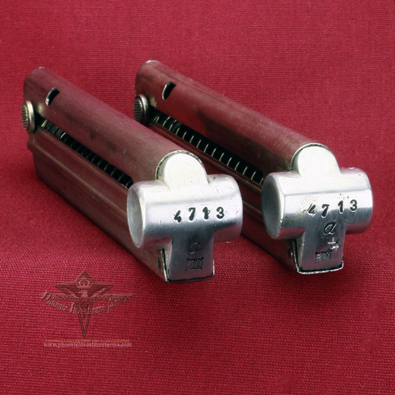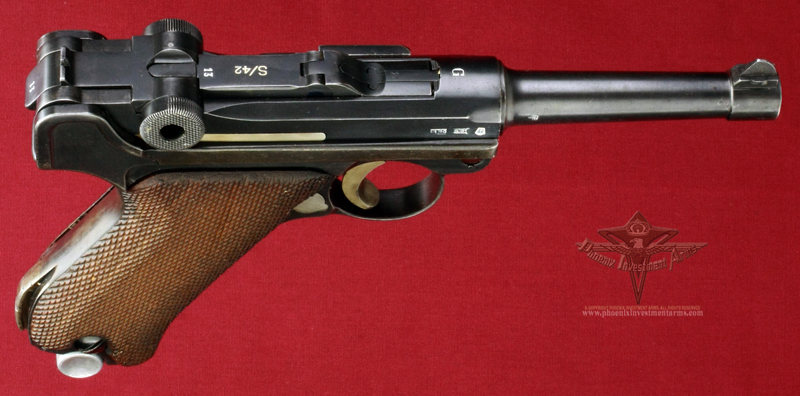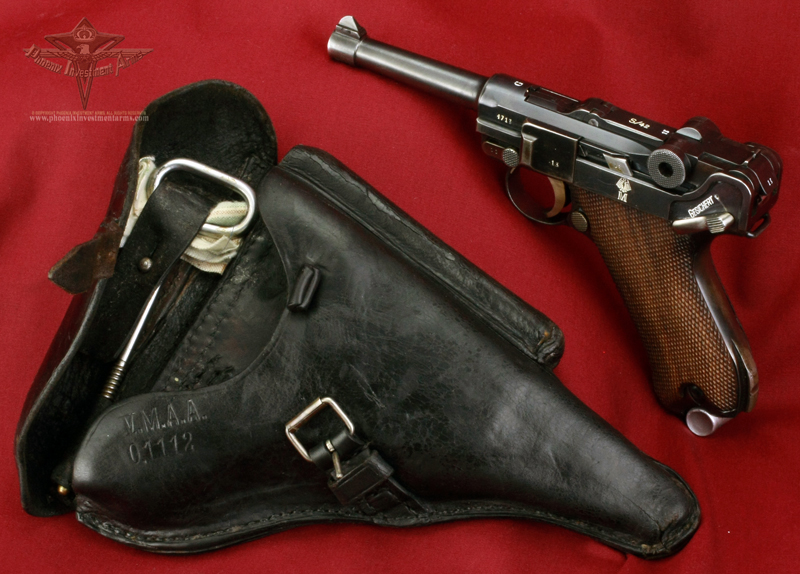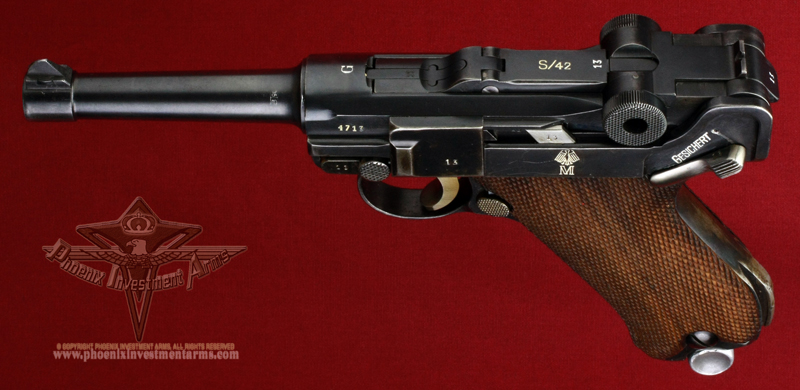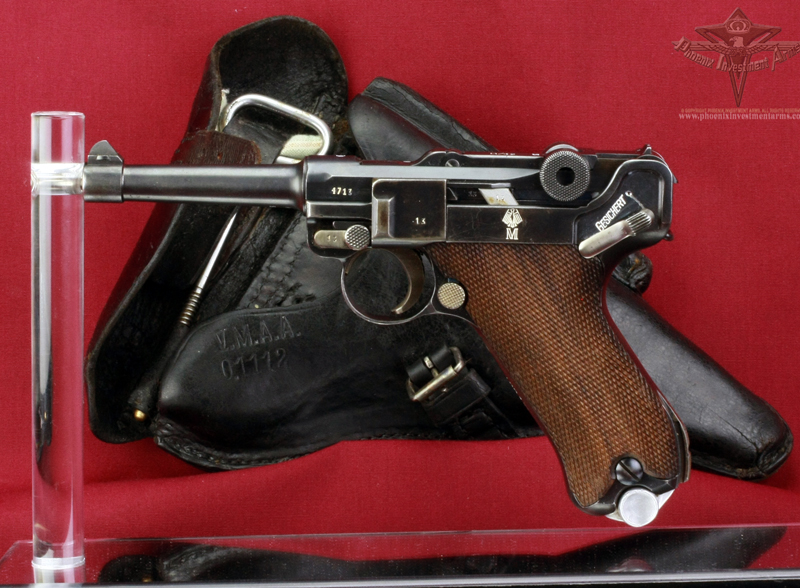|
|
|
This is a "G" Date (1935) Chamber dated Mauser Code S/42 Baltic Sea Nazi Navy. Truly a collector's find! There is the Mauser Code S/42 on the first toggle link with a "V" notch rear sight. The last two digits of the serial number appear on all the small parts including the thumb safety. This was early in the war and the finish and craftsmanship was outstanding. It has the very early Marinen Navy proof and the Nazi Baltic Sea markings on the grip strap. This is a full rig with two matching magazines. (1147) |
|
|
| Photographs are copyrighted, all rights reserved, any extraction, reproduction or display of gun pictures without the express consent of the Phoenix Investment Arms is strictly prohibited. Thank you for your cooperation. |
|
|
|
|
This Parabellum is 9mm with a 4" (100mm) barrel that is proofed and serial numbered to the gun. Serial number placement is in the military ("exposed") style. The thumb safety is marked "Gesichert" and extractor "Geladen." This example has all matching numbers. |
|
|
|
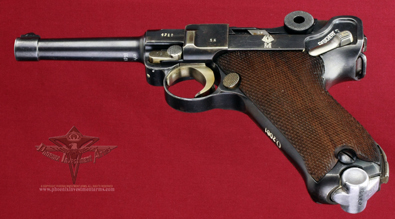 |
 |
|
|
These Lugers were manufactured by Mauser-Werke in Oberndorf. The S/42 code was being instituted in 1934 K-Date and these two early years of the National Socialist Government the Letter-Code was used in an attempt to circumvent the Allied Commission from the Treaty of Versailles. This is a very early "G" Date as the production proofing was in old style proofs before the implementation of the Eagle 63 for Mauser. |
|
 |
|
